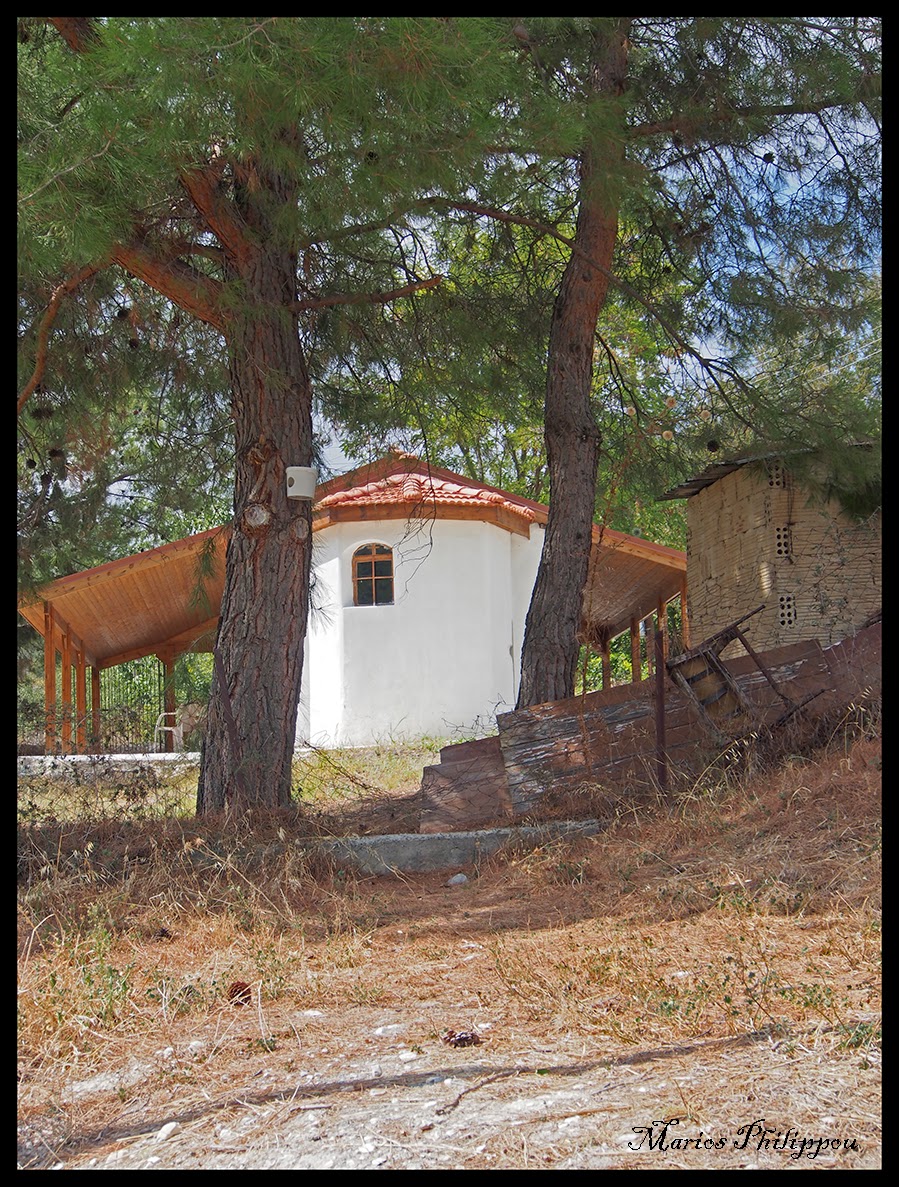The team of Cyprus Discovery visited the village Koilani.
Koilani (Greek: Κοιλάνι) is a village in the Limassol District of Cyprus, located 3 km south of Pera Pedi.
The picturesque village of Koilani is built close to the west bank of the river Kryos (Cold River), a tributary of the Kouris river, at an altitude of 820 meters. Tall mountaintops come into view from all the sides of the village, adding a unique beauty to the landscape. It has a distance of 36 kilometres from Limassol (north-westerly). The village is connected through a motorway to Pera Pedi in the east, to Vouni in the south-east, to Mandria in the north, and to Silikou in the south-east. Koilani has preserved -to a great degree -the rich, traditional folk architecture of the wine-producing villages of the Limassol district. Narrow, paved, ascending alleys, tiled roofs, picturesque upper floors, yard walls with earthenware jars, balconies, and arches with embossed frames at the entrances of houses that are built with regional, carved limestone, providing to the visitor a taste of the tradition and inheritance of this unique -in beauty -village.
For the naming of the village there are several interpretations:

1. According to one version, up to the Byzantine years it was named Kourion or Korineon and after the Frank Domination era it took its name from a French region of the same name.
2. Another version assumes that it originated from the ancient city of Kyllene of Pelloponesos (Greece) from where the first inhabitants of the village came. This however does not seem very probable if we accept that the village was named Kourion or Korineon during ancient times.
3. A third version contemplates that the village took its name due to standing in a valley. In reality however the village is built upon a steep slope of the Arames Mountain.
The village, like all the wine-producing villages of the region, has gone through great fluctuations of the population. In 1881 the inhabitants of the village numbered 995, increasing to 1119 in 1891, and to 1301 in 1911. In 1921 the inhabitants were reduced to 1279, increasing again to 1397 in 1946. Among the inhabitants of the community there were 85 Turkish-Cypriots. In 1960 the inhabitants decrease to 1304 (999 Greek-Cypriots and 35 Turkish-Cypriots). The decrease of population continues in 1973 when the inhabitants were 874 (839 Greek-Cypriots and 35 Turkish-Cypriots). After the 1974 Turkish invasion, the Turkish-Cypriot inhabitants of the village were coerced by their leadership to abandon the village and -along with other Turkish-Cypriots from other villages -transfer for relocation in the island's occupied territories. So, in 1976 the village's inhabitants decreased to 827, all Greek-Cypriots, and to 614 in 1982. Today the village's inhabitants number 280. Wikipedia
a
You can find 6 churches to Koilani Village. Cyprus Discovery found them.
Koilani (Greek: Κοιλάνι) is a village in the Limassol District of Cyprus, located 3 km south of Pera Pedi.
The picturesque village of Koilani is built close to the west bank of the river Kryos (Cold River), a tributary of the Kouris river, at an altitude of 820 meters. Tall mountaintops come into view from all the sides of the village, adding a unique beauty to the landscape. It has a distance of 36 kilometres from Limassol (north-westerly). The village is connected through a motorway to Pera Pedi in the east, to Vouni in the south-east, to Mandria in the north, and to Silikou in the south-east. Koilani has preserved -to a great degree -the rich, traditional folk architecture of the wine-producing villages of the Limassol district. Narrow, paved, ascending alleys, tiled roofs, picturesque upper floors, yard walls with earthenware jars, balconies, and arches with embossed frames at the entrances of houses that are built with regional, carved limestone, providing to the visitor a taste of the tradition and inheritance of this unique -in beauty -village.
For the naming of the village there are several interpretations:

1. According to one version, up to the Byzantine years it was named Kourion or Korineon and after the Frank Domination era it took its name from a French region of the same name.
2. Another version assumes that it originated from the ancient city of Kyllene of Pelloponesos (Greece) from where the first inhabitants of the village came. This however does not seem very probable if we accept that the village was named Kourion or Korineon during ancient times.
3. A third version contemplates that the village took its name due to standing in a valley. In reality however the village is built upon a steep slope of the Arames Mountain.
The village, like all the wine-producing villages of the region, has gone through great fluctuations of the population. In 1881 the inhabitants of the village numbered 995, increasing to 1119 in 1891, and to 1301 in 1911. In 1921 the inhabitants were reduced to 1279, increasing again to 1397 in 1946. Among the inhabitants of the community there were 85 Turkish-Cypriots. In 1960 the inhabitants decrease to 1304 (999 Greek-Cypriots and 35 Turkish-Cypriots). The decrease of population continues in 1973 when the inhabitants were 874 (839 Greek-Cypriots and 35 Turkish-Cypriots). After the 1974 Turkish invasion, the Turkish-Cypriot inhabitants of the village were coerced by their leadership to abandon the village and -along with other Turkish-Cypriots from other villages -transfer for relocation in the island's occupied territories. So, in 1976 the village's inhabitants decreased to 827, all Greek-Cypriots, and to 614 in 1982. Today the village's inhabitants number 280. Wikipedia
a
You can find 6 churches to Koilani Village. Cyprus Discovery found them.
























0 σχόλια:
Δημοσίευση σχολίου